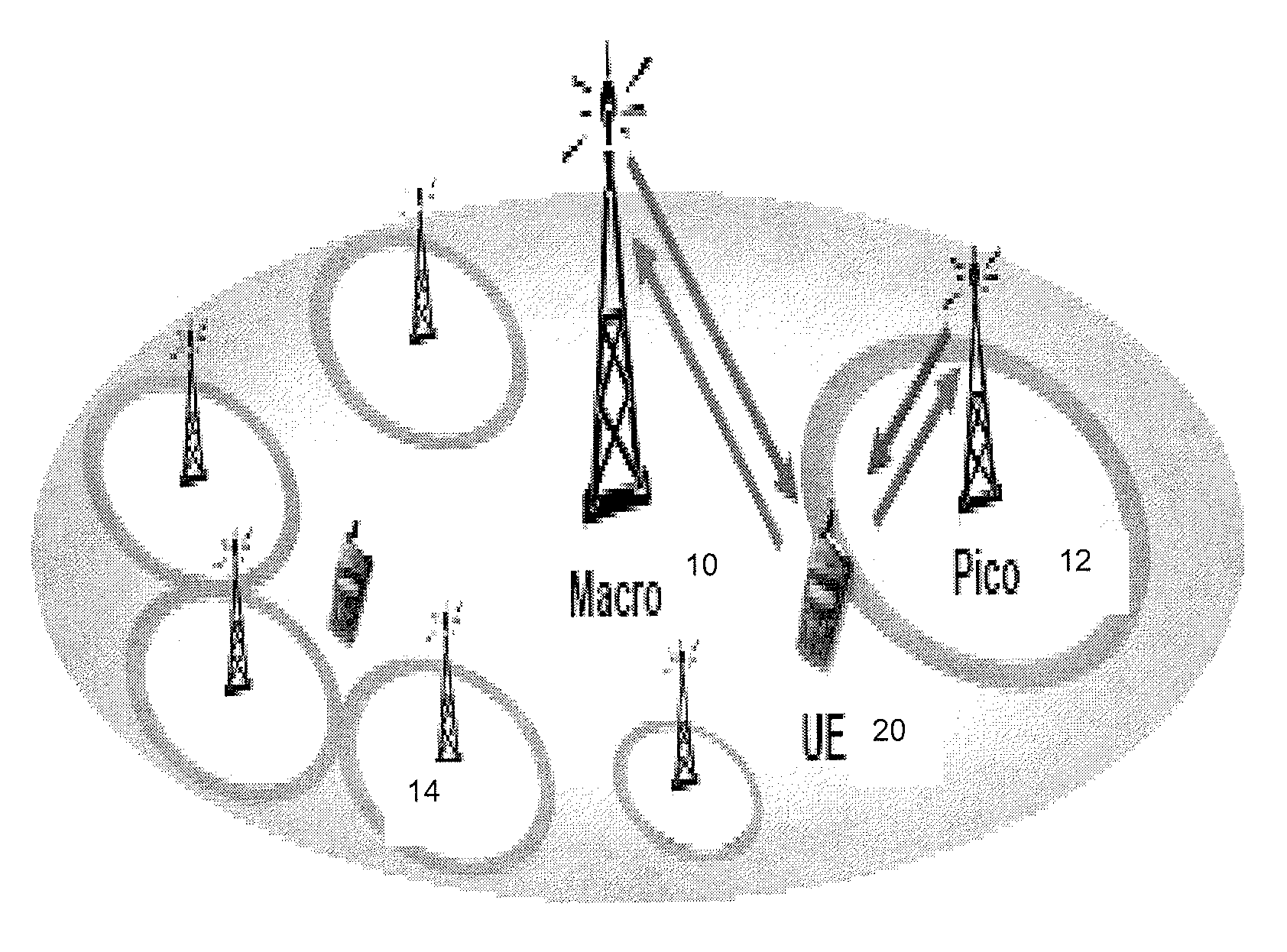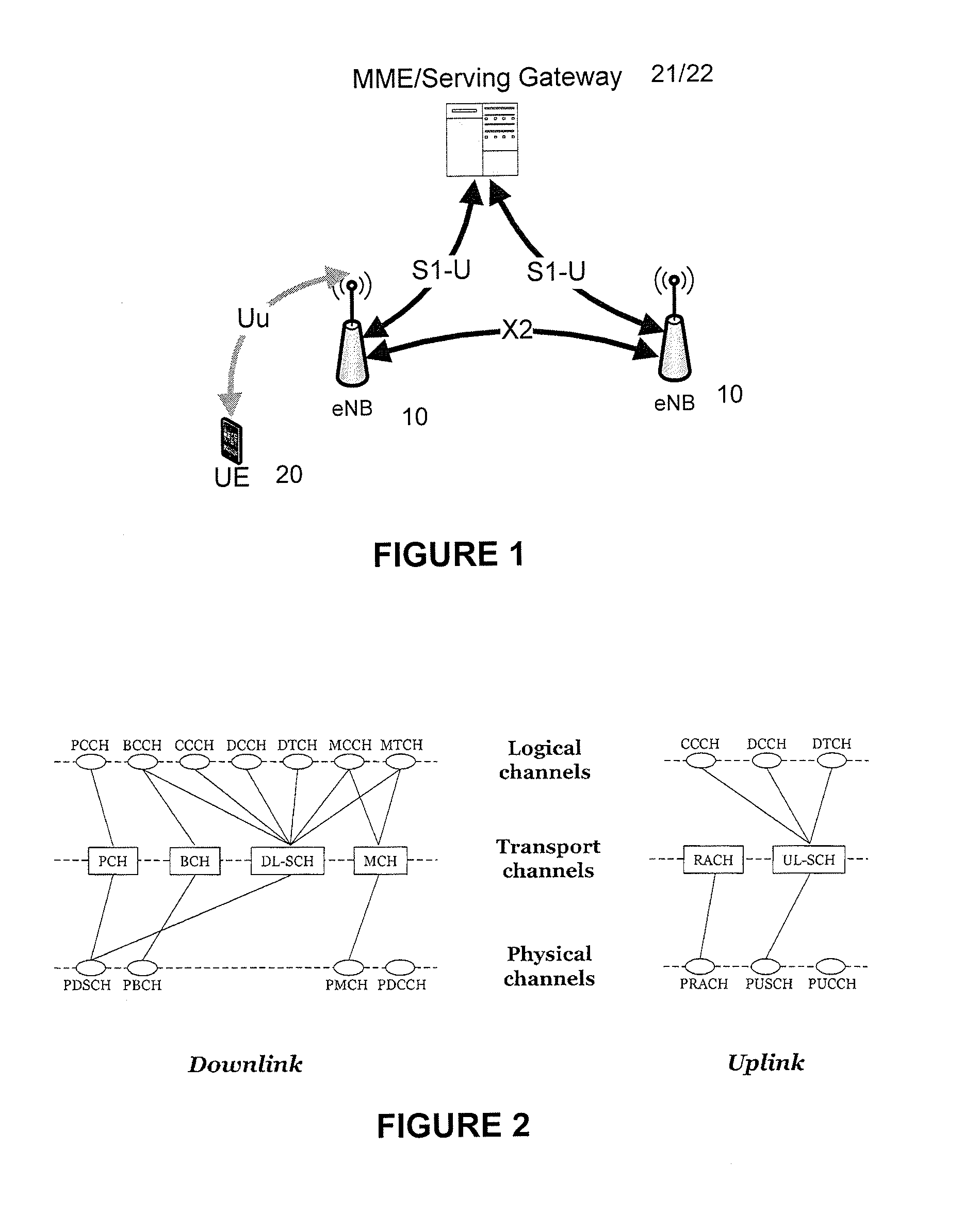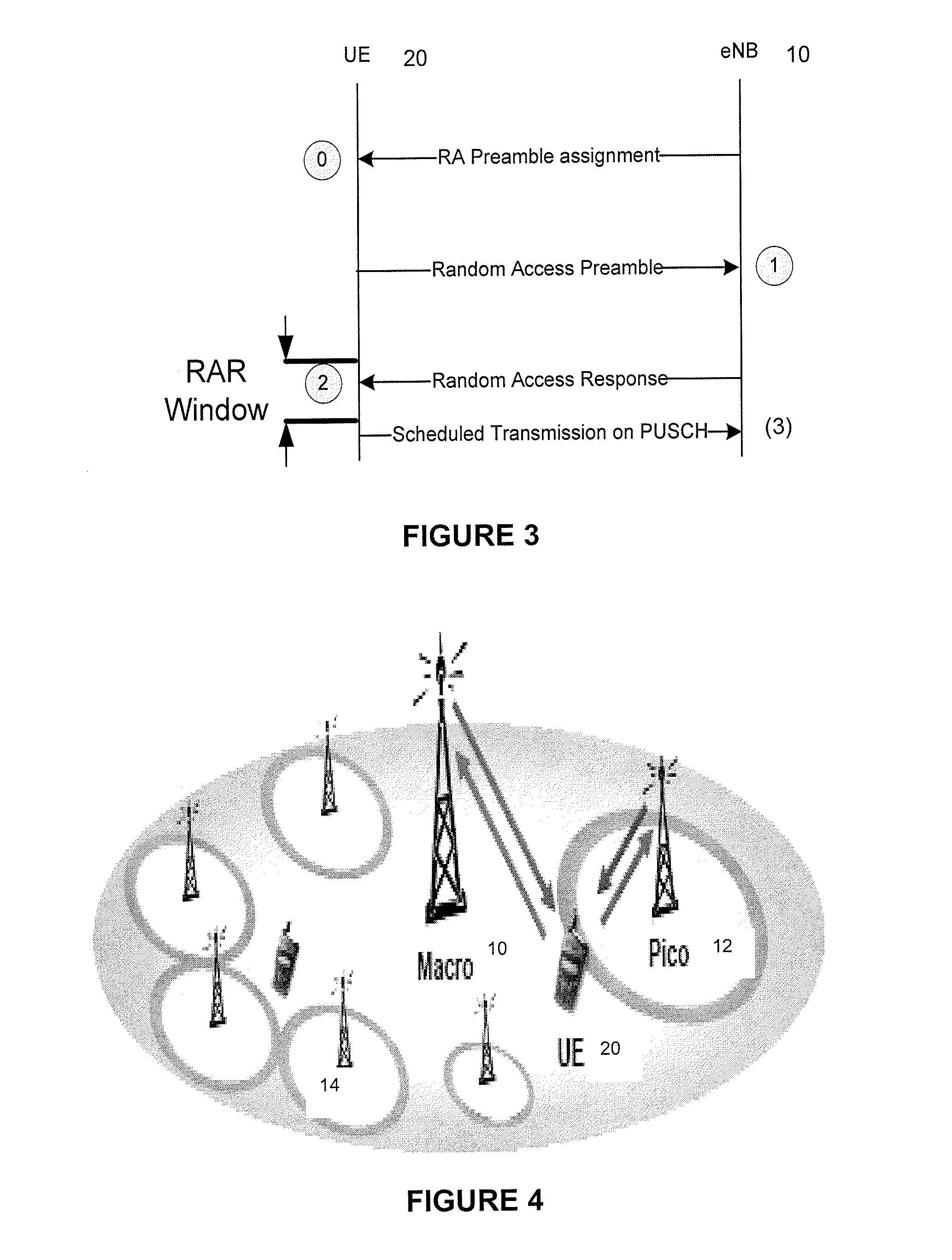Interference measurement in heterogeneous networks
a heterogeneous network and interfering technology, applied in the field of wireless communication networks, can solve the problems of difficult to form a meaningful time-average of interference at the penb, risk of “collision", and disrupt the conventional ra procedure in the macrocell
- Summary
- Abstract
- Description
- Claims
- Application Information
AI Technical Summary
Benefits of technology
Problems solved by technology
Method used
Image
Examples
first embodiment
[0138]In a first embodiment, at least one among the RA preambles reserved in the macrocell for contention-free RA is designated as indicating:[0139]The exact number of repetitions of the RA procedure the UE is to conduct; or[0140]The maximum number of repetitions of the RA procedure the UE may conduct, terminating after the first successful procedure; or[0141]The minimum number of repetitions of the RA procedure the UE must conduct even if the procedure is successful, no further repetitions being conducted after the first successful RA procedure upon or after the given minimum number;
and may indicate, if not configured by other means such as RRC signalling:[0142]The frequency / time domain resources to be used for transmission of the RA preamble;[0143]The power with which the UE shall transmit the RA preamble in each repetition of the RA procedure.
[0144]In variations of this embodiment, such power may be unequal or equal between the repetitions. In the latter case the power may be ind...
fourth embodiment
[0158]A fourth embodiment is like the third, but instead of using a combination of parameters in the RARG, an additional bit is added to the RAR as currently specified and used to indicate specifically if the invention is in operation and thus whether the UE is expected to make the relevant interpretation of the C-RNTI.
[0159]In a variation, the bit-setting described above indicates retrospectively that the UE should interpret the preamble it was configured with according to the first embodiment. This may imply further repetitions of the RA procedure according to possibly different settings than the UE used in the procedure which has already completed or, depending on the configuration it may imply not further action.
[0160]Configuration Via RAR Window
fifth embodiment
[0161]In a fifth embodiment, the contention-free RA procedure is altered such that the size of the RAR window is set to zero and defined to imply that there is to be: (i) no expectation of receiving RAR and therefore (ii) no scheduled transmission on the UL following the RA procedure, and (iii) even if the procedure does not complete successfully, there are to be no further transmissions of the RA preamble. It should be noted that, conventionally, a RAR window size of zero is not permitted and UE behaviour in this case is therefore not defined.
[0162]To explain further, in current LTE specifications the RAR window size is defined as {sf2, sf3, sf4, sf5, sf6, sf7, sf8, sf10} where “sf” represents a value in subframes (which as already mentioned are each 1 millisecond long). Thus, sf2 corresponds to 2 subframes / 2 ms, sf3 means 3 subframes / 3 ms and so on. The zero RAR window in this embodiment would need to be defined in the specifications.
[0163]Operation of this embodiment can be notif...
PUM
 Login to View More
Login to View More Abstract
Description
Claims
Application Information
 Login to View More
Login to View More - R&D
- Intellectual Property
- Life Sciences
- Materials
- Tech Scout
- Unparalleled Data Quality
- Higher Quality Content
- 60% Fewer Hallucinations
Browse by: Latest US Patents, China's latest patents, Technical Efficacy Thesaurus, Application Domain, Technology Topic, Popular Technical Reports.
© 2025 PatSnap. All rights reserved.Legal|Privacy policy|Modern Slavery Act Transparency Statement|Sitemap|About US| Contact US: help@patsnap.com



